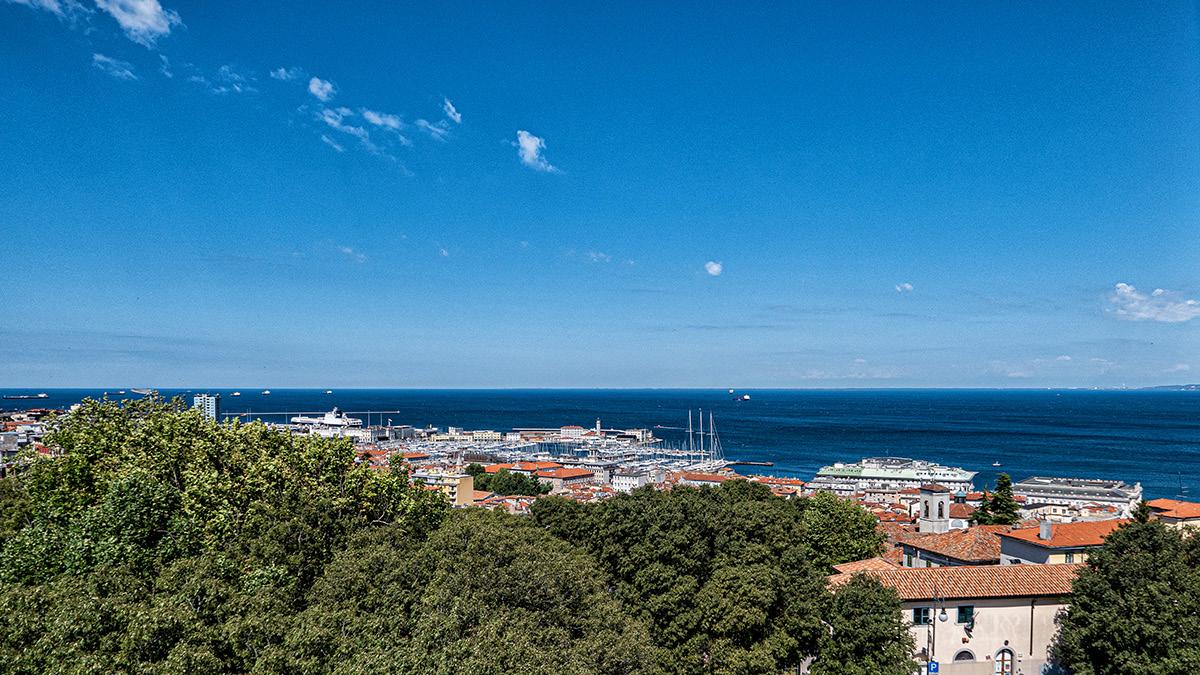
5 minute read
Trieste by Gabrielle Dellanave
My wife and I have always wanted to visit Trieste, a city that has fascinated us for its glorious history and complicated past. Finally, in mid-June, shortly before returning to this side of the Atlantic we decided to give it a go. If at all possible it’s a good idea to avoid crowded coastal cities in July and August.
The weather was perfect with summer temperatures that made for light packing so we were able to be on the Adriatic Highway heading north east in no time. After about five hours on the road and a couple of pit stops we arrived at our destination. Parking was extremely convenient on Molo 4 providing easy access to the centre of town and safe parking for as long as needed.
We found our accommodations at a previously booked B&B (ViaNdante) and were pleased by the quality and elegance of the restored palace right in the centre of town. We left our bags, were given some tips by the host for restaurants and bars and set out to explore the Julian city.
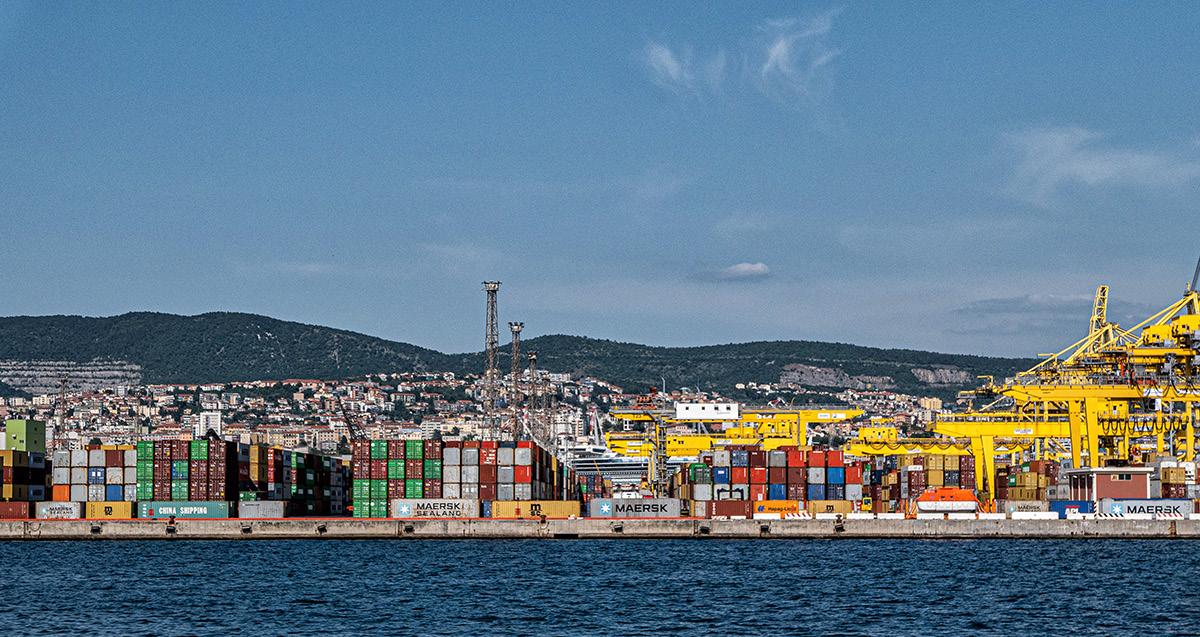
Busiest terminal container in Souther Europe
© Gabrielle Dellanave
Trieste lies on a narrow strip of land between the Adriatic and the Slovenian coasts. It has an approximate area of 32 square miles. The port itself is one of the largest and most productive in the Mediterranean thanks to its depth and location, serving as a terminal for many countries in Europe. An interesting and relevant fact is that, in addition, to all of the other goods in and out of the port, 40% of Italy’s coffee enters through the port of Trieste.
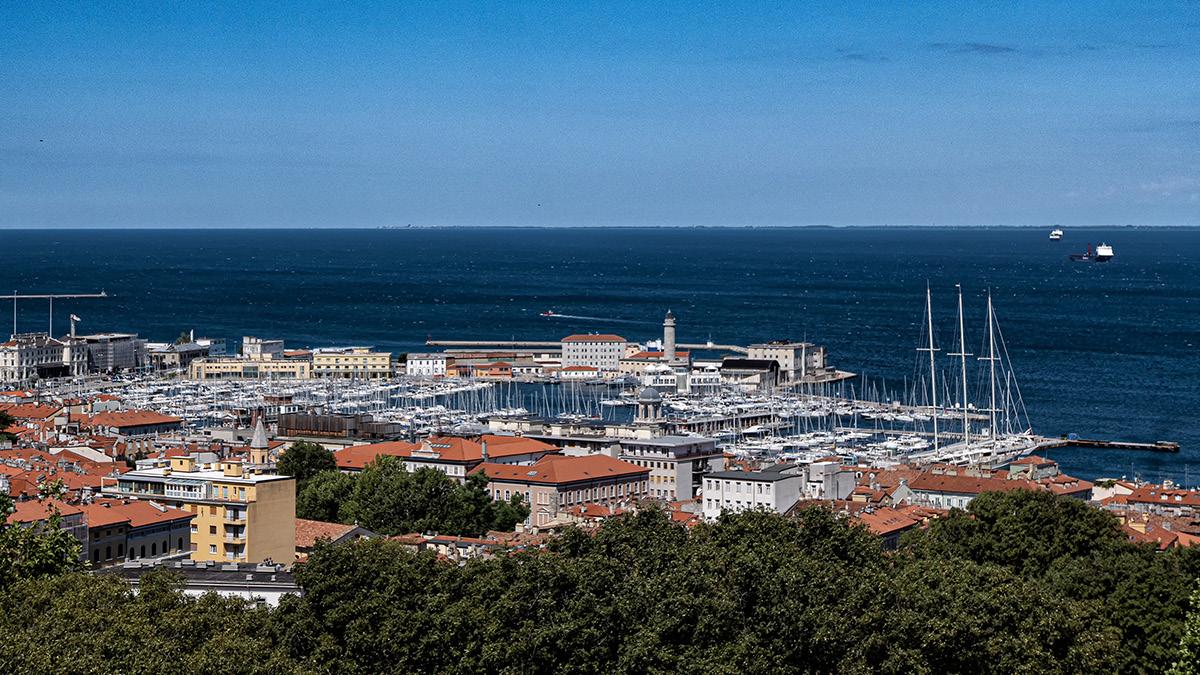
View of the Turist Port
© Gabrielle Dellanave
The population estimate in 2022 is 230,000 but it feels like a much smaller city due to its walkability. The city is a technology and research hub housing the International Centre for Science and Technology and is aptly referred to as the Silicon Valley of Europe. In addition, Trieste is home to two Fortune Global Insurance Companies, Illy coffee and several mega shipbuilding companies.
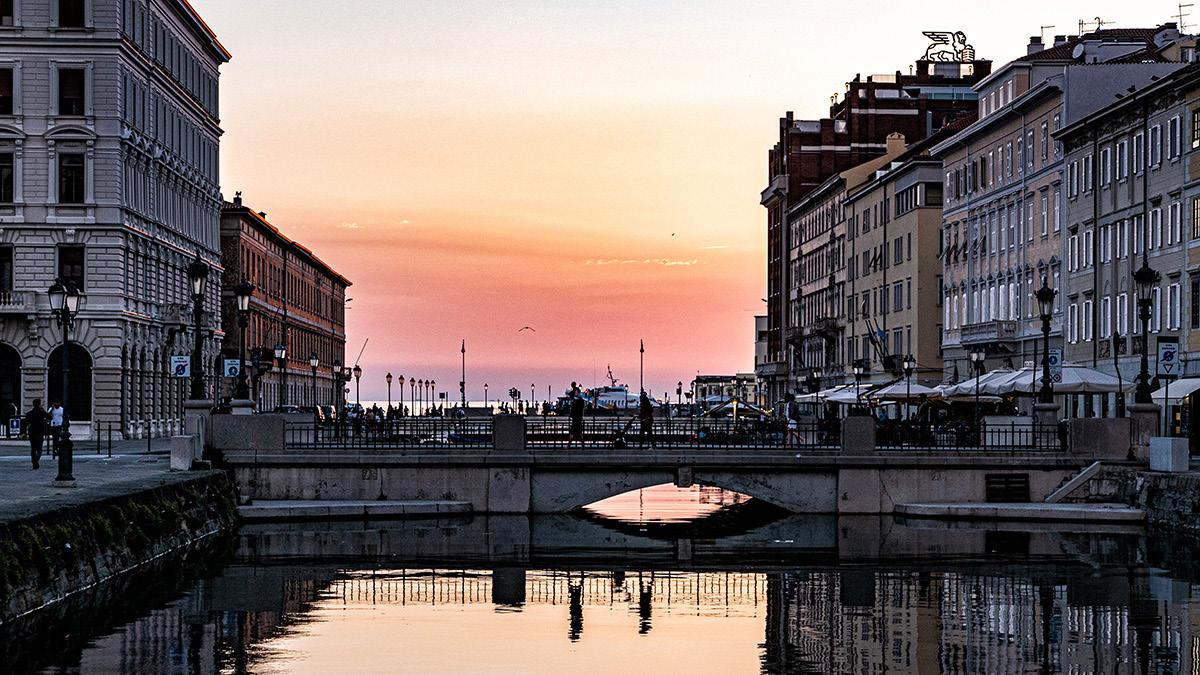
Canagre Grande Entrance
© Gabrielle Dellanave
Two aspects of the city immediately strike the tourist-visitor: the number of bars and cafes with outdoor tables and the number of people of every age and gender who smoke. Bars and cafes are busy from 7am to 7 or 8pm and then the city seems to quieten down relatively early for casual strolling. Throughout the day there is a lot of activity and delicious food everywhere. We enjoyed one bar in particular for small bites and panini called cicchetti at Al Barcollo where these snacks are served with fresh cod spread, ham, mortadella, salami and many other creative combinations on fresh bread. We dined there for lunch, happy hour or even at dinner if we were looking for something light. They offered cocktails and a variety of local wines all served by friendly waiters who were in no rush to free the table.
The cuisine of the city is influenced by the more than 500 years of Hapsburg rule so naturally the pastries are exquisite and inviting for breakfast. La Bomboniera was a perfect stop for coffee and pastries both for its Austrian ambiance and the quality of its selections. Dinner at Bistrot PiGreco was an experience because the Greek chef and owner is a one-man show who knows how to prepare fish with flair. Not to be missed is the famous Buffet experience at one of the many restaurants available.
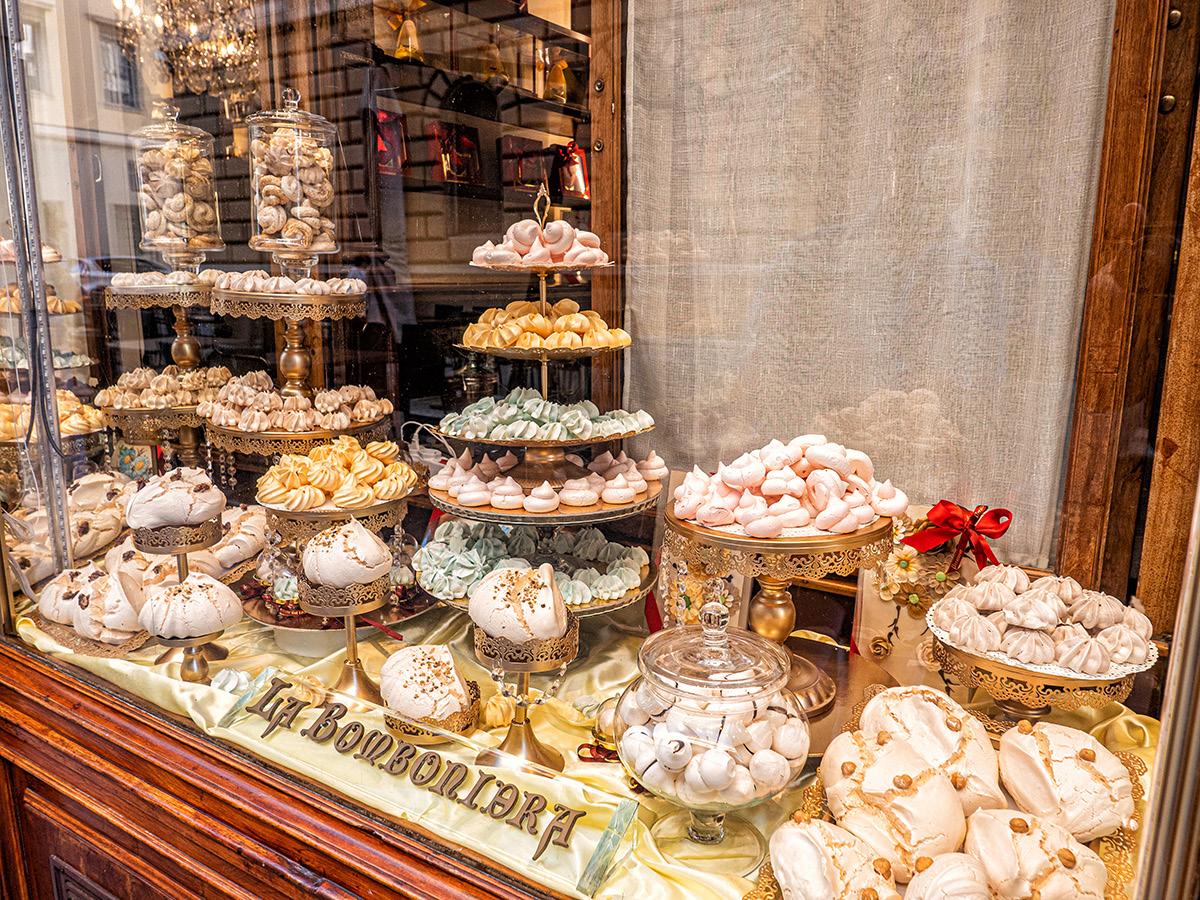
A scrumptious shop window
© Gabrielle Dellanave
We chose Da Pepi where we ate the most extraordinary pink ham, kraut, and potatoes with obligatory horseradish only available where the Hapsburgs once ruled. It was delicious and very inexpensive. All Sorgente was our last stop for fish - a tiny restaurant where reservations are required. The most notable items there were the antipasti and the pasta dishes, everything fresh and well prepared. Note that dinner reservations are required in nearly all restaurants.
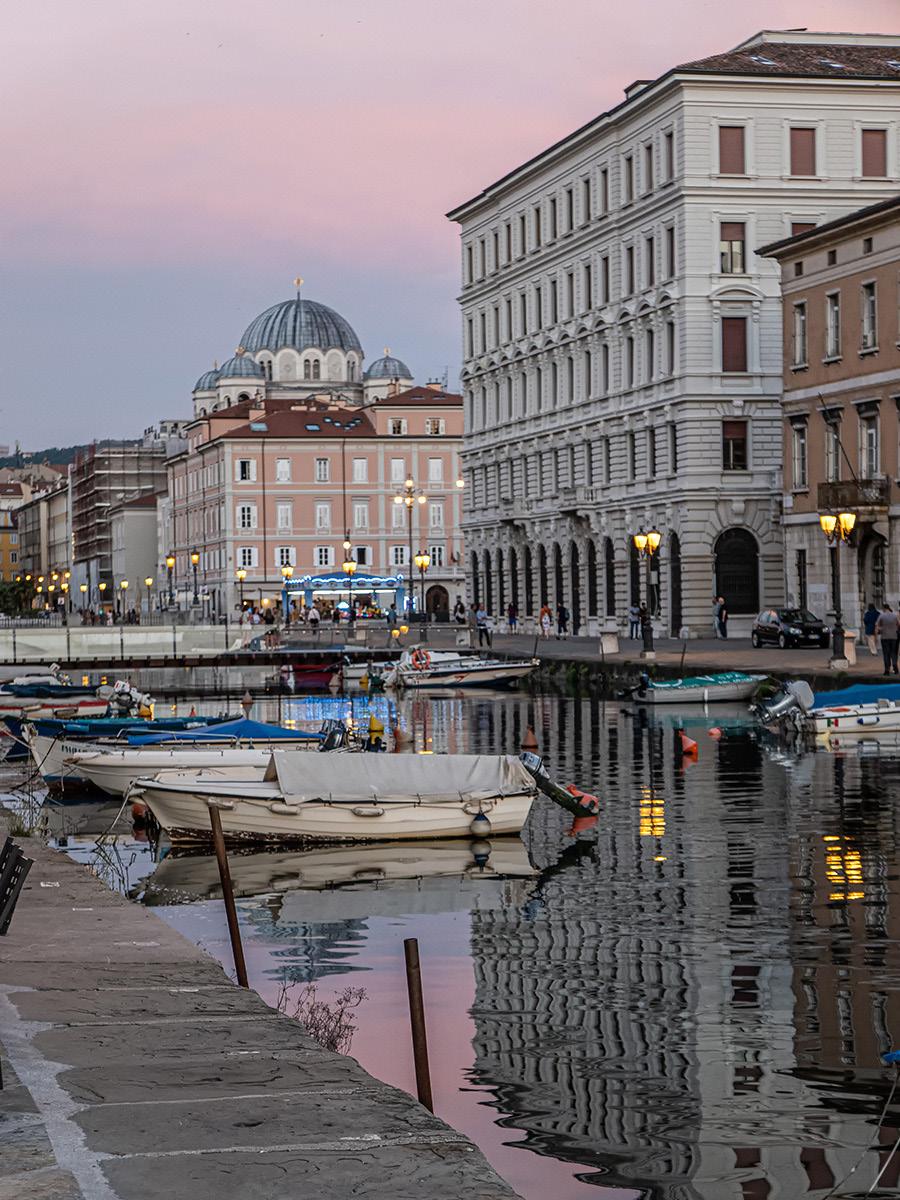
The Domes of the Ortodox Church
© Gabrielle Dellanave
Finally, in just four days, we were able to visit the Miramare Castle and gardens by local bus near the train station, the Castello and Cathedral of San Giusto built on a former Roman settlement located walking distance from our B&B (a lot of stairs) passing the Roman Amphitheater on our way back to the centre of town, the fishing town of Muggia by ferry from the port, the Canal Grande multiple times on foot (notice the bronze statue of James Joyce on the bridge along the canal), Piazza Unita’ d’Italia and a myriad of narrow streets with wonderful photo opportunities. Note that unfortunately the Alinari Image Museum is permanently closed which was a disappointment.
Our host suggested leaving the car on Molo 4 and using public transport or walking rather than the car due to traffic congestion both day and night, and he was right. We feel like we made better use of our time by walking and using public transport.
We certainly didn’t exhaust all of the places to visit and cannot wait to return especially for the famous Barcolana, the world’s largest sailing regatta, held annually on the second Sunday in October.
All images © Gabrielle Dellanave
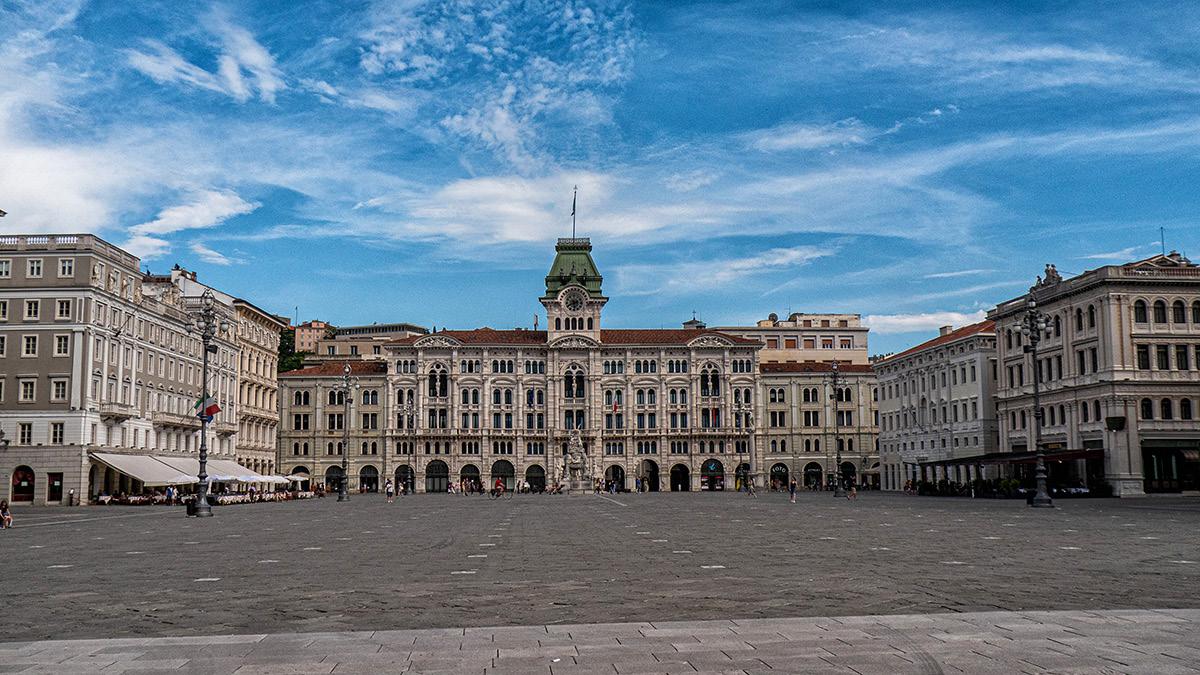
Piazza Unità d’Italia
© Gabrielle Dellanave
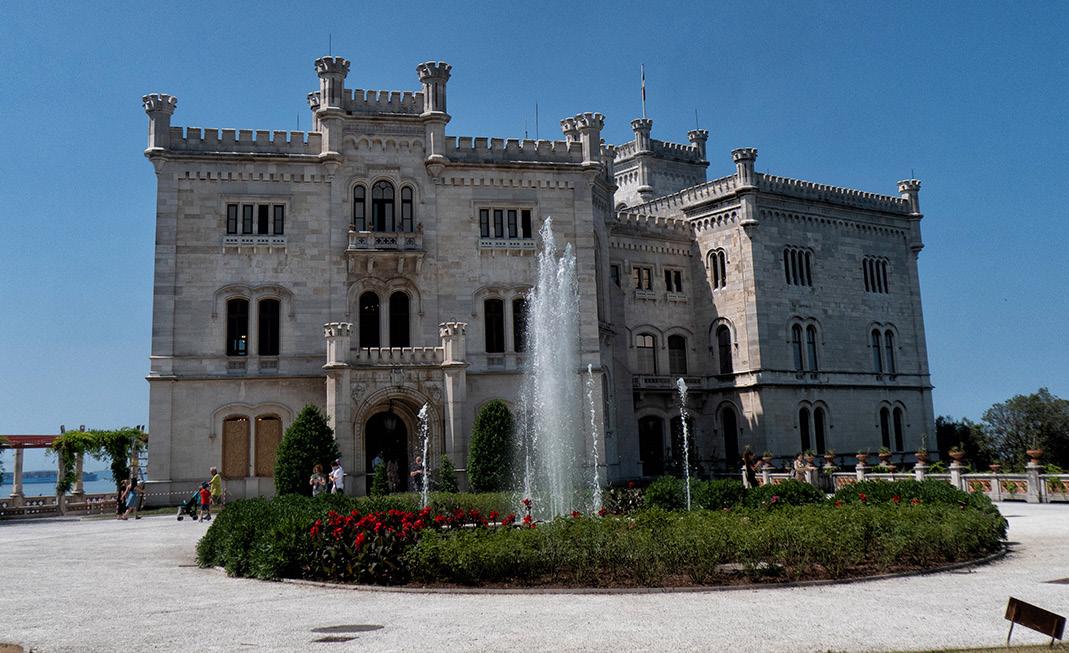
Miramare Castle
© Gabrielle Dellanave
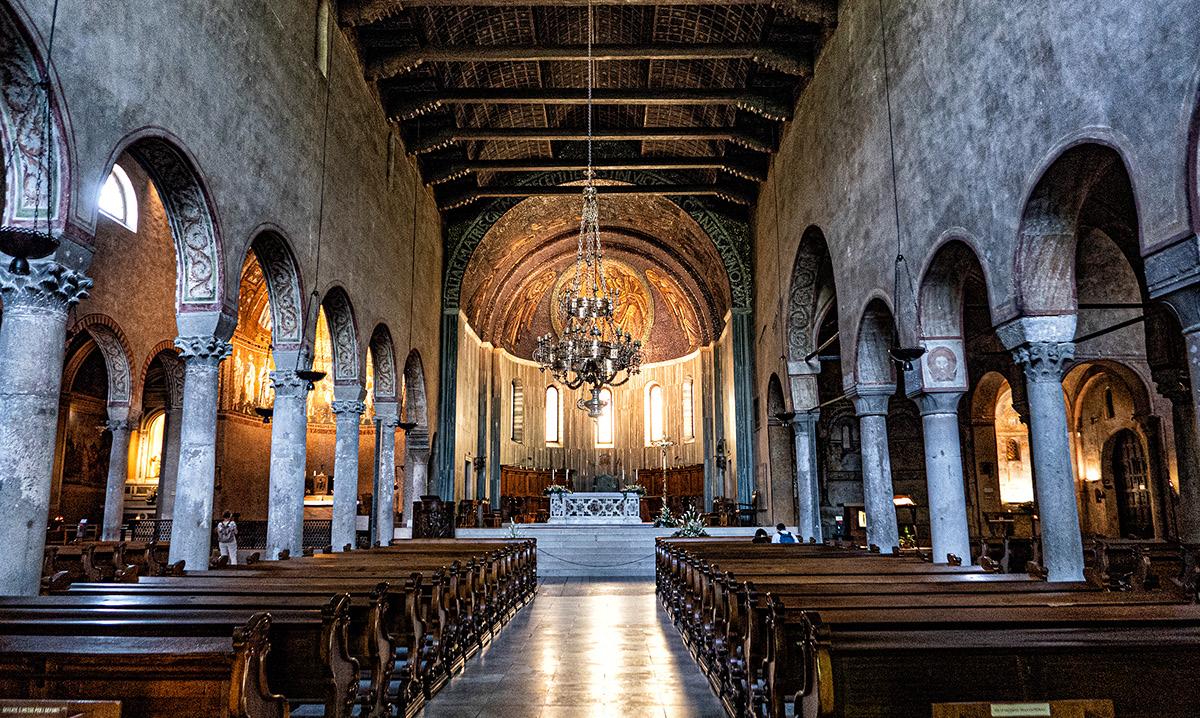
View of the Basilica main Nave
© Gabrielle Dellanave



